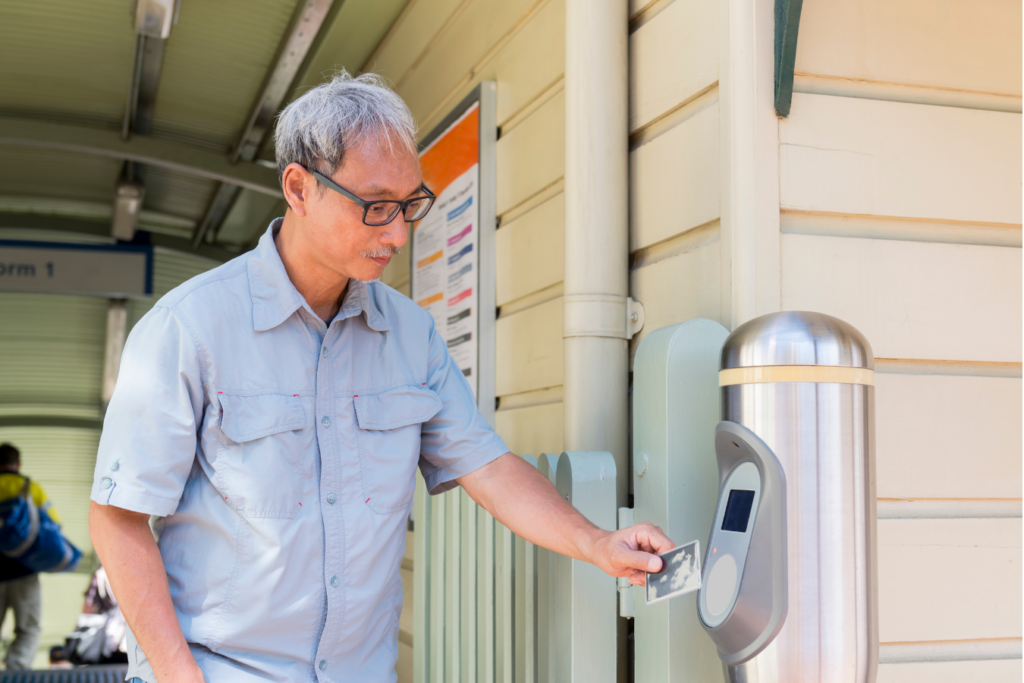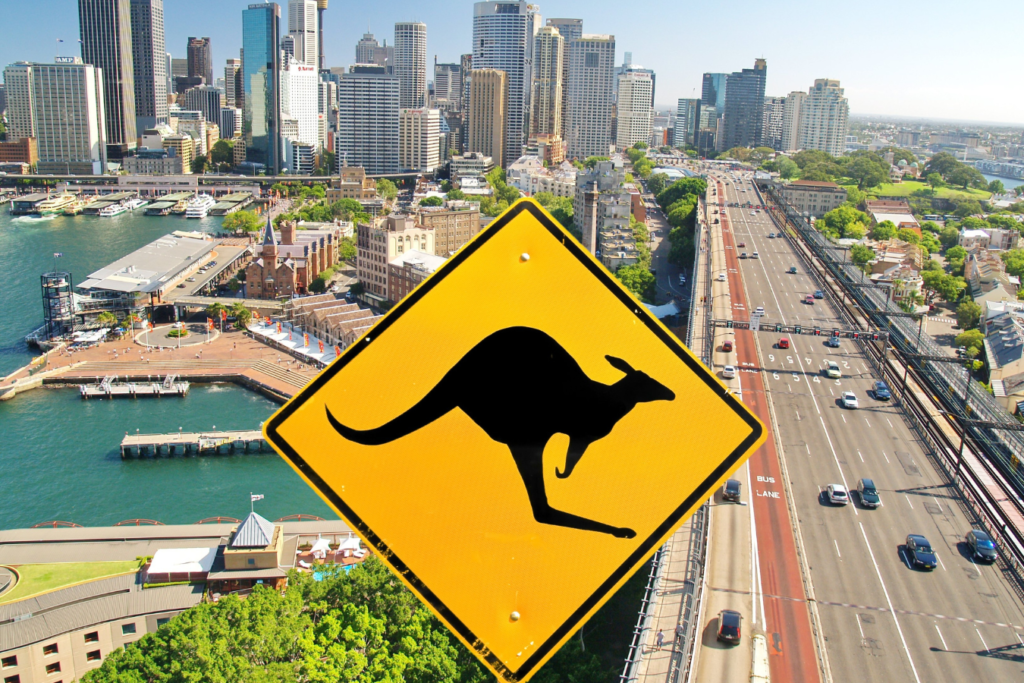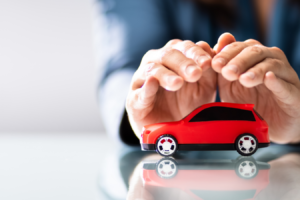Public Transport, or Driving? Best Ways to Get Around in Australia
Getting around your new city is another important consideration. Given how huge Australia is, even distances within a city centre might be very big. To be very honest, public transport in Australia as a whole is quite poor and not widely developed, so if you plan on getting around anywhere outside the city centre, having a car is basically a must (we’ll talk about this next). If you don’t have a car, however, here are your options.
The Public Transport System
Depending on where you are, you’ll likely have (at least some sort of) access to buses, trains, or trams. Each state and territory has its own transport system, and a separate transport card. If you travel interstate, you will need to buy a new card for the local system. If you’re in a major city, you might consider getting yourself one of those:

- In Sydney (NSW), you can get an Opal card
- In Melbourne (VIC), get yourself a myki card
- In Brisbane or Gold Coast (QLD), you’ll get a GoCard
- In Canberra (ACT), you’ll find a MyWay Card
- In Adelaide (SA), they use a Metrocard
- In Perth (WA), there’s a SmartRider Card
- In Hobart, Tasmania, you can buy a Greencard
- In Darwin (NT), you can get yourself an NT Transport Card
Depending on the location and services available, you’ll be able to use these cards to access all sorts of public transport, including buses, trains, trams, light rail and even ferries.
The price of each service depends on whether you are eligible for any concessions (student, disability, etc), as well as on the distance traveled. Most systems use a zone-based fare structure, meaning the cost depends on the number of zones crossed.
Generally speaking, public transport is relatively inexpensive in Australia. If you have a local transport card, some fares might even be free! If they’re not, a single ticket can cost around $2-5, which, depending on how often you use it, is not unaffordable.
Is Public Transport Safe and Reliable?
Generally speaking, yes. Public transport in Australia is typically safe and reliable.
- Safety: Keep an eye on your belongings, especially during peak hours, the same as you would in any major city. Most transport services have security and surveillance for added safety.
- Punctuality: While services in major cities are typically punctual, be prepared for possible delays during peak times or adverse weather conditions. It’s always a good idea to check live updates through transport apps.
If public transport isn’t your thing or you want to explore further, there are other ways to get around:
- Biking: Many cities have bike-sharing programs or bike lanes. Renting a bike can be a fun and healthy way to get around.
- Walking: Walking is a great way to explore local neighborhoods, parks, and attractions, especially in city centers. Many cities have pedestrian-friendly areas. Something to consider here however, especially if you’re from Europe where pedestrians have more rights, is that in Australia, cars often don’t stop for pedestrians. Because of how large the country is, walking isn’t really a common mode of transport for the local population. Most everyone has a car, and driving is the norm. Presumably because of this, pedestrian rights aren’t very developed and most drivers don’t think to stop for pedestrians – even when it’s raining!! So while walking can be a fantastic touristy experience, make sure you check the road twice before crossing.
As mentioned before, the public transport available in Australia is not greatly developed yet. Getting from one city to another via public transport is not really possible, unless you don’t mind spending 12 hours on a Greyhound bus. The simplest explanation for this is, again, the huge distances between the cities. Let’s take getting from Sydney to Melbourne as an example:
| Time | Cost | |
|---|---|---|
| Greyhound bus | 12 hours | $100-120 |
| Airplane | 1.5 hours | $75-100 |
So if you plan on taking any trips to different cities while you’re here, it’s easier and cheaper to fly! You can check out our detailed post on domestic travel tips here to learn more here. Or, alternatively, if you want to see something along the way, you may wish to drive. Which brings us to:
Driving and Car Ownership
As you’ve probably noticed from the above, driving in Australia is pretty much essential if you don’t live in the heart of the city. While buses still operate in suburbs and regions outside of the cities, they are quite infrequent and difficult to rely on for daily work or school commutes. In some regions in Queensland there might be one bus going per hour – or even per day! -, meaning that if you miss this single bus, you’re in trouble!

Here are the 3 biggest websites where you can view cars for sale:
Driving on the Left Side of the Road
While driving here might seem difficult if you’ve learned to drive on the right side of the road, don’t worry. While it can usually take a month or 2 to get used to it, the general driving culture in Australia is very relaxed and laid back (except in Sydney, perhaps). So even if you stop at an intersection for too long, or drive in an unusual way, it’s very unlikely anyone will get upset! The roads are also very wide (again, maybe except in Sydney), so you always feel like you have a lot of space around you to drive how you feel comfortable.
Driver’s Licences
An important consideration here is your driver’s licence. Most countries have an agreement with Australia regarding this, so if you go to your closest Department of Transport (the name can be slightly different depending on the state, this is the one in QLD and this is NSW, just as examples), they will be able to issue you a temporary Australian equivalent of your country’s licence, until your full licence is ready.
It’s important to note also that there are different types of licences in Australia, including provisional and full licences. If you’re under the age of 25 and haven’t had your licence for long, you might be issued a provisional licence first before you get a full licence. Again, consult your local Department of Transport for all the relevant details for your personal circumstance.
Car Registration
When purchasing a vehicle, it must be registered with the relevant state or territory authority. This involves:
- Providing proof of identity and ownership
- Paying registration fees
- Completing a roadworthy inspection if required
Each state and territory in Australia has its own regulations and processes for insurance and registration, including:
Respecting Road Rules
Following road rules is taken very seriously in Australia, and penalties for violations can be strict and severe. Make sure to follow all the speed limits, wear your seatbelt and don’t use your phone while driving – all fairly common things. Most violations result in fines and demerit points, which, if you get too many, can lead to losing your licence or increased insurance premiums.
Vehicle Insurance

All vehicles must have at least third-party insurance, which covers injury to other people in an accident (often referred to as CTP, or compulsory third-party insurance). If you cause an accident that injures someone else, this insurance will cover their medical expenses and compensation claims.
It may also cover damage to other vehicles or property, but this varies by policy. Here are some of the largest car insurance providers to choose from:
You also have the option of comprehensive insurance, which covers damage to your own vehicle as well as third-party injury and property damage. It may include theft, fire, and vandalism. There are also median policies that cover third-party injuries and property damage, as well as your vehicle in case of fire or theft.
The cost of insurance premium can vary greatly based on factors such as:
- Driver’s age (drivers under 25 usually pay much higher premiums)
- Vehicle type and value
- Driving history and claims record
Conclusion
Whether you’re a tourist, student, or new resident, Australia’s public transport system provides a reliable and cost-effective way to explore the major metropolitan areas of Australia. While services may differ across regions, the combination of buses, trains, trams, and ferries in most cities ensures you can reach your destination comfortably and efficiently.
Wherever you can’t go via public transport, you can always get by car, which is something we highly recommend, even if you’re not a very confident driver. And if you’re not sure where you’d even drive, you can check out our post about Australia’s hidden gems and stunning destinations, all a drive away!
Plus, to make your life easier, we’ve created a simple transportation cost calculator that you can use to see how much you can expect to spend on fuel or public transport in Australia.
Good luck – you’ve got this!


